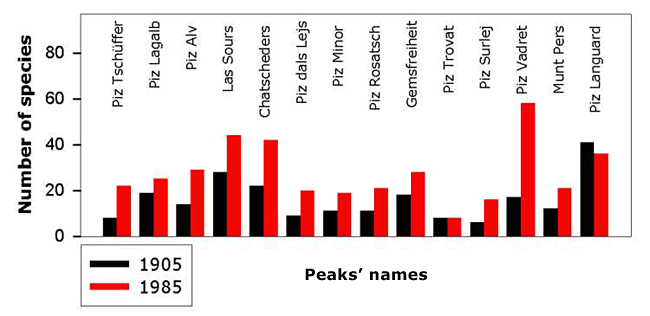Alpine plant species in
general, and especially the orophytes, are adapted to the harsh environmental
conditions in the alpine life zone. In the future, climatic conditions
in this zone will most probably change due to global climate warming.
The increase of the mean annual temperature would lead to an alleviation
of environmental factors, which mainly determine the distribution of vascular
plant species, namely temperature and growing season length. The question
is, how plants will respond to the changed climatic conditions. Will they
adapt to the new situation, will they migrate to more convenient regions,
or will they simply become extinct? The first evidence of migration was
reported by Hofer (1992) and Grabherr et al. (1994), who showed that the
species numbers on mountain summits in the Central Alps has increased
during the last 100 years, suggesting that elevated temperatures have
allowed species from lower altitudes to climb upwards. Alternatively,
global climate warming could also cause a loss of specific habitats and
an increase of competition in the alpine life zone thereby leading to
a reduction of species richness. However, these are speculations. Today,
we do not yet have the data required to accurately predict future alpine
plant diversity. |

